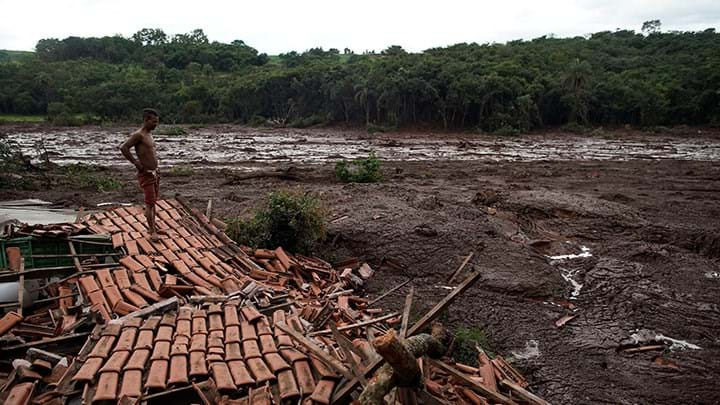Vale ordered to put aside US$1.47bn for dam collapse damages
BRAZILIAN mining company Vale has been ordered by a judge to put aside around R$7.93bn (US$1.47bn) for potential fines related to the fatal collapse of a mining waste dam last year, which killed at least 259 people.
The order is the result of a partially granted preliminary injunction requested by state prosecutors of Minas Gerais, Brazil. The prosecutors have filed a lawsuit against Vale alleging that the actions of Vale employees hindered inspection activities at the dam complex.
Previously, Brazil’s National Mining Agency released a technical report which said that Vale withheld information that could have prevented the dam collapse. Additionally, it was reported that 13 employees of Vale and safety inspector Tüv Süd had been criminally charged in relation to the collapse.
Lindsay Newland Bowker, Founder and Executive Director of the database World Mine Tailings Failures, commented: “It is likely that the actual damages arising from the Brumadinho failure approach $2bn as being demanded by Government. It is important that remediation and restitution is undertaken without further delay.
“It took government, investors, lenders and miners together to create the conditions that lead to failure. It will take that same partnership to pay for these damages and institute practices in each sector that will be effective in preventing such loss in the future."
Bowker estimates that separate government claims for damages could push the figure to US$2bn.
David Chambers, a geophysicist and President of the Center for Science in Public Participation (CSPP), said: “The main cost of these tailings dam failures is in the lives lost, but as we can see the financial and environmental costs alone justify a significant change to the process of managing these waste disposal facilities.”
Potential changes Chambers noted include making safety a guiding principle in design, construction, operation, and closure; responding accordingly in design to any potential loss of life in an extreme event; mandating use of best available technologies for tailings (waste from ore processing); banning mine tailings facilities immediately upstream from inhabited areas; and banning upstream dams at new mines and closing existing upstream dams.
Upstream dams are not built in a single phase as with hydroelectric dams. The face is built in stages as tailings are added and their depth increases. Vale’s Dam 1 of the Córrego do Feijão mine, located near Brumadinho in Minas Gerais, Brazil, was an upstream dam. Its collapse led to the confirmed deaths of 259 people. 11 people are still considered missing.
Brazil banned upstream dams last year, following the collapse of Vale’s Dam 1.
Other financial repercussions
The recent order adds to other financial repercussions that Vale has faced due to the collapse of the dam.
In February 2019, Vale entered a preliminary agreement with Brazilian authorities to pay damages to more than 107,000 residents of Brumadinho and within the range of 1 km of the Paraopeba river. The river is located near the Dam 1 site. According to a report released by an independent committee established by Vale, the company made payments of R$1.1bn under this agreement.
The report also notes that as of the cut-off date (13 December 2019), civil indemnity agreements totalled R$1.6bn.

Following the collapse of the dam the company announced donations to the families of victims (RS$100,000), residents within the “Self-Rescue Zone” (R$50,000 per property), and people whose productive or commercial activities were affected by the collapse (R$15,000). The “Self-Rescue Zone” (previously termed the “Self-Saving Zone”) is a defined area in which Vale is responsible of informing residents, in an emergency. According to the committee report 470 people received payments.
In January, Vale announced that it had budgeted R$24.1bn to address expenses incurred up until 30 September 2019, as a result of the collapse. The budget was for payments including indemnities, donations to affected parties, expenses involved in the recovery of affected areas, and compensation.
Vale’s Extraordinary Independent Consulting Committee for Support and Reparation was formed following the collapse of Dam 1 to monitor the measures taken to support victims and recover the affected area. The committee issued its report on 19 February 2020.
Vale’s recovery works are ongoing. The company says it remains committed to repairing the damage caused by the dam collapse. In January, it announced a pilot project for the environmental recovery of the area impacted by the collapse. Additionally, the company announced in April that it would begin disposing of the mine tailings from the fatal collapse into the extraction site, which was expected to accelerate removal and final disposal.
Vale says it will continue to contribute to investigations into the collapse.
Recent Editions
Catch up on the latest news, views and jobs from The Chemical Engineer. Below are the four latest issues. View a wider selection of the archive from within the Magazine section of this site.




